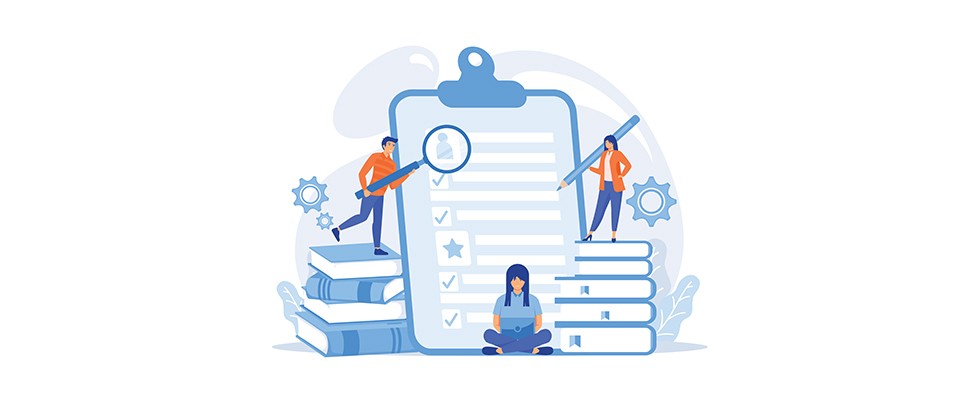
We are halfway through the first performance year of the Home Health Value-Based Purchasing (HHVBP) model, which has accelerated competitive outcome pressure while highlighting predictable OASIS-E performance risk patterns.
Adding the Brief Interview for Mental Status (BIMS) and the Confusion Assessment Method (CAM) to the OASIS-E has illuminated persistent variability in clinician assessment technique and aligned data capture, competencies key to positive HHVBP performance. Without achieving OASIS-E competency, agencies will continue to experience a negative impact on their revenue, risk prediction, outcomes and engagement—a heavy cost to patients, clinicians and HHVBP performance.
Now that we have six months of experience behind us, it is a good time to review the targeted strategies that can help clinicians excel at OASIS-E documentation.
1. Focus on assessment competency.
Variances in the approach to the OASIS assessment technique are often passed down through training, such as using interviews versus observation of functional status with delayed documentation. Changing this predictable cascade is within your reach, given the adoption of what we have learned about learning itself and applying it to the building of OASIS-E competency.
The science of learning is complicated, and everyone has different learning style preferences and rates of retention. Experts agree that a learning style involving repetition and association in brief encounters with the information over time delivers the best outcomes for retention and application for automatic use.
For this reason, orientation should never be a single event with a start and end time, as is typical for our industry. None of us would know how to tie our shoes if we were only told how to do it but were never given a chance to practice or learn through repetition. We’d wander through life, tripping over our shoelaces or relying on someone else to tie them for us. The same concepts apply to the home health clinician, especially those completing comprehensive assessment visits, including OASIS-E.
OASIS-E guidance gained through didactic or passive learning is not “one and done.” Top OASIS-E training extends to the clinician’s ability to take that knowledge and apply it situationally to each patient’s individual assessment efficiently and consistently. Ensure that your leaders, trainers and preceptors work from the same script and provide experiential learning opportunities where the work happens— for example, in the patient’s home. This consideration goes beyond the first two weeks of orientation, as this objective competency measurement is achieved incrementally and tied to data-informed learning needs.
Solid OASIS-E training must clearly demonstrate how to complete documentation within the workday. This substantially mitigates the “OASIS-dread” mentality, as well as the decreased accuracy and work-life boundary blurring that results when clinicians wait to complete their charting.
We recommend a process where a competent (measured) trainer works alongside the clinician, objectively scoring and providing data-informed feedback on the clinician’s assessment technique and aligned data element response selection accuracy. Using an objective measurement tool for OASIS competency in the field is vital to providing a framework for experiential and active learning, creating a domino effect of success in your training programs.
The orientation of a new clinician will be more successful if it is framed as “onboarding.” It should proceed at an individualized pace, never falling into the trap of substituting experience for competency.
By bringing focused training and aligned, objective performance tools to the reality of the job, you will build a culture of confidence and competence, which results in more engaged and satisfied employees. Clinician engagement and satisfaction naturally result in higher patient satisfaction, improved outcomes, revenue generation and agency success.
2. Promote consistent & targeted feedback loops.
Once the agency establishes a foundational method for OASIS-E assessment competence, we recommend establishing iterative, data-informed feedback loops as a way to continuously improve.
Targeted feedback loops tied to learning needs can reveal opportunities for the individual and agency to improve through iterative, incremental learning. Without continued reinforcement and monitoring, humans forget up to 80% of what they have learned. As your workforce charges through their days assessing patients and collecting data, they push information out to make room for new information coming in. Establishing a reliable and effective method to build competency includes understanding how to build iterative microlearning so that information sticks in the mind of a busy clinician.
Partnering with coding and OASIS education and review experts is a great way to better understand and improve your team’s performance patterns while saving you time. It is crucial to quickly identify the areas requiring improvement and the individual contributors who need attention. Remember, if you do not track specific element performance and revisit the microlearning tied to that element, accuracy will suffer.
3. Understand the OASIS-E ripple effect.
OASIS-E accuracy has a profound ripple effect, from revenue and outcome effects to perceived acuity, capture of risk and aligned care planning. Agencies can unwittingly cloud their ability to reduce avoidable hospitalization when patient acuity isn’t captured in the documentation. Accurate capture of acuity sets the foundation for leveraging today’s predictive analytics, directly impacting your clinician’s ability to help patients stay home. A faulty assessment or data capture can lead to an unclear picture of patient acuity, risk and need, which is inadequate in providing true, value-based care.
Clinicians and agencies are faced with challenging work every day for the communities they serve and within HHVBP. Following these strategies to help build OASIS-E competency sets your agency up for HHVBP success and establishes the competitive edge your agency deserves.
